What Is Sand?
Important Point
Sand could be a blend of bijou grains of rock & granular materials which is distinctly defined by size, being admirable than gravel & coarser than silt.
Sand is composed by erosion or broken pebbles & weathering of rocks, which is toted away by seas or rivers & chilling & defrosted during the winter disintegrate rock up the sand are going to be made.
Occasionally Sand on beaches also can be manufactured by bijou broken-up pieces of coral, bone, & shell, which are split by predators so pummeled by the ocean, & even bijou segments of glass from bottles repudiated within the sea & other mineral materials or the bones of fishes or other oceanic animals.
Sand is often also regarded as a textural class of soil or soil type. A sandy soil comprising quite 85% sand-sized particles by mass.
Also, Read: Peb Structure Meaning
Composition of Sand
- Sand is crucially manufactured from unconsolidated granular materials consisting of either rock flakes or mineral chips or oceanic materials. It’s principally manufactured from silicate minerals & silicate rock granular particles.
- Conventionally quartz is that the most dominant mineral here because it possesses highly impenetrable properties to weather.
- Other ordinary rock-forming minerals like amphiboles & micas also discovered in sand. Ponderous minerals like tourmaline, zircon, etc also can be contemporary within the sand in bijou agglomerations.
- But from a lofty level, most sand on the beach is prepared from gray or tan quartz & feldspar.
- However, the foremost common mineral within the sand is quartz–also referred to as silica.
- This can be prepared when silicon & oxygen combine.
- Feldspar is that the most discovered cluster of minerals on the earth’s surface & forms about 65% of the terrestrial rocks.
- When the wind & sea prepare on the shores, they convey these teeny-tiny granules to the beach & make up the sand with this blend.
Types of Sand
Types of sand & there color & classification of sand. Sand might be labeled primarily based on varied standards.
Classification of Sand: Different Types of Sand
It is unacceptable to classify the sand. Sand may be a loftily variable substance & thus it’s attainable to attempt to classify it into discrete categories.
Classification of Sand in Terms of Colour
There are some range of colors is discovered in sand. They are
- White Sand: It’s manufactured from eroded limestone & should contain coral & shell fragments, additionally to other organic or organically extracted fragmental material is may find in this color of sand. Magnetite, Chlorite, Glauconite, or Gypsum is additionally found.
- Black Sand: Black sand comprises of volcanic minerals & lava flakes & Coral sublimates.
- Pink Sand: Foraminifera, a minute entity that incorporates a reddish-pink shell, is liable for all this color. Coral, shells, & calcium also are discovered in this blend.
- Red-orange Color: This tint is manufactured due to the veneer of iron oxide.
- White-grey Color: This sand consists of fine rounded grains & it’s well graded.
- Light-brown Color: It comprises of rounded grains.
Classification of Sand in Terms of Geography
- Coral Sand: Coral sand has diverse meanings.
- Glass Sand: This kind of sand principally consists of silica. & this is often the chief element in this sort of sand.
- Immature Sand: Sand concocted of the identical minerals that made up its ancestral rocks.
- Gypsum Sand: This sort of sand predominantly comprises salt dihydrate. (CaSO4•2H2O)
- Ooid Sand: Ooids are rounded pellets, and additionally are spheroidal veneered sedimentary grains. And this sort of sand is manufactured by calcium carbonate.
- Silica Sand: Silica sand is a sort of unblended quartz.
- Pit Sand: Obtained by forming pits & potholes into the soil. It’s whetted, angular, honeycombed, and free from detrimental salts. Clay & other impurities should be cleansed & screened before utilizing for engineering jobs. Fine pit sand, when rubbed between fingers, mustn’t leave any blotch left thereon. It designates the existence of clay. Utilized for the mortars. Pit sand is unalloyed sand. It’s piled up from underneath by digging a pit. The pit’s profundity is about 1m – 2m from the ground stage. Due to its worthier binding top quality, it’s substantially utilized in civil building.
- River Sand: Discovered at river beds & shores. Fine, round & spherical because of rubbing operation of water currents. Has less frictional robustness due to spherical behavioral pattern. Almost white in tincture. Grains are smaller than pit sand, & therefore more appropriate for reinforcement jobs. Conventionally obtainable in unblended condition & therefore is utilized for every kind of Civil Engineering works. It is usually unalloyed sand. River sand is accessible in very explicit circumstances & will extensively be utilized for all-purpose of building actions like plastering & concerning like Hirakud Dam.
- Sea Sand: Obtained from seashores. Fine, spherical, & glossy due to rubbing activity of water. Brown in pigmentation. Worst of the 3 styles of sand due to containing plenty of salts. Salts mop up sogginess from the environment & result in persistent sogginess & efflorescence within the structure. Sea salt additionally acts as a negative catalyst in the setting operation of cement. Besides, it comprises of shells & biotic organisms which deteriorate within the body of mortar & concrete, therefore diminish their life & vigor. Due to the contribution of salt, sea sand isn’t usually utilized for the building. If you would like to use them it should rigorously wash out.
- Green Sand: Possess some greenish substances.
- Desert Sand: Discovered within a wide range of deserts.
- Lithic Sand: Sometimes sand consists of bijou rocks or comparatively more little, from this its evolution of its name is lithic sand.
- Mixed Carbonate-silicate Sand: Few sand samples are a blend of biological & lifeless sand grains.
- Biogenic Sand: Sand could also be concocted wholly of bijou skeletons – seashells, corals, etc.
- Garnet Sand: Garnet could be an ordinary mineral within the sand but frequently it forms the bulk of it.
- Olivine Sand: This sort of sand is extremely wobbly. And it’s principally utilized for steel casting sectors. But, it’s a typical sand mineral in some areas & occasionally makes up a substantial part of the sand.
- Volcanic Sand: Volcanically affected regions have their own variety of dark-colored sand with a distinctive range of features. Frequently coal is discovered therein.
- Heavy Mineral Sand: In this style of sand there are some lofty mass molecules is discovered & might prepare a stable structure.
- Sands with Hematitic Pigment: Hematite is the mineral that provides reddish pigment & sandstone.
- Continental Sand: This sand could be a ordinary all over the planet for the formation of assorted structures.
- Quartz Sand: Quartz is identical as silicon sand. Mainly quartz or silicon dioxide is the chief element to create this sand.
- Artificial Sand: Stilted effectiveness is dissimilar from river sand. It manufactured by crushing basalt rock or granite. It’s properly graded & coarse-type sand.
- Brick Sand: This sand is explicitly utilized for brickwork. The finest modulus of this sand should be 1.2 to 1.5 & will not comprise over 4% silt.
- Plaster Sand: Noticeably, it’s utilized for plastering work. The best modulus shouldn’t be greater than 1.5 & silt content shouldn’t be over 4% in this diversity of sand.
- Concrete Sand: For concreting purposes, we generally utilize coarse sand. The best modulus of this sand ought to be 2.5 to 3.5 & it mustn’t contain greater than 4% silt.
Classification of Sand in Terms of Size (ASTM)
- Fine Sand: Sand particles could withstand No. 16 sieves. This is often usually employed in plastering works. The sand passing through a sieve with an aperture of 1.5875 mm is termed because of the fine sand. Fine sand is predominantly utilized for plastering jobs.
- Moderately Coarse Sand: Sand particles should pass through No. 8 sieves. This sort of sand is usually utilized for mortar & masonry works.
- Coarse Sand: All the particles should have No. 4 sieve. This kind of sand is implausibly fitted to concrete job. The sand is passing through a sieve with a hole of 3.175 mm is called the coarse sand. coarse sand is utilized in preparing mortar for masonry works.
- Gravelly Sand: The sand is passing through a colander with a gap of 7.62 mm is named because of the gravelly sand. Gravelly sand is utilized for concrete work. It generally utilized for concrete operations.
What Is Sand?
Sand is a granular material composed of finely divided rock and mineral particles. Sand has various compositions but is defined by its grain size. Sand grains are smaller than gravel and coarser than silt.
Types of Sand
In the United States, sand is commonly divided into five sub-categories based on size: very fine sand (1⁄16 – 1⁄8 mm diameter), fine sand (1⁄8 mm – 1⁄4 mm), medium sand (1⁄4 mm – 1⁄2 mm), coarse sand (1⁄2 mm – 1 mm), and very coarse sand (1 mm – 2 mm).
Composition of Sand
The most common component of sand is silicon dioxide in the form of quartz. The Earth’s landmasses are made up of rocks and minerals, including quartz, feldspar, and mica. Weathering processes – such as wind, rain, and freezing/thawing cycles – break down these rocks and minerals into smaller grains.
Classification of Sand
Sand is commonly divided into five sub-categories based on size: very fine sand (1/16 – 1/8 mm), fine sand (1/8 mm – 1/4 mm), medium sand (1/4 mm – 1/2 mm), coarse sand (1/2 mm – 1 mm), and very coarse sand (1 mm – 2 mm). These sizes are based on the Φ sediment size scale, where size in Φ = -log base 2 of size in mm.
What Is Sand Made of?
Sand forms when rocks break down from weathering and eroding over thousands and even millions of years. Rocks take time to decompose, especially quartz (silica) and feldspar. Often starting thousands of miles from the ocean, rocks slowly travel down rivers and streams, constantly breaking down along the way.
Chemical Composition of Sand
The primary chemical component of sand is silica, followed by smaller amounts of alumina, iron oxide, and calcium oxide. The chemical composition of sand is primarily SiO2, or silica. Silica, by definition, is a component of soil, rock, and other minerals.
Structure of Sand
Sand is a granular material made up of fine rock particles. Sand is a naturally occurring, finely divided rock, comprising particles or granules ranging in size from 0.0625 (or 1⁄16) to 2 millimeters. An individual particle in this range size is termed a sand grain.
Fine Sand Possesses
Fine sand possesses several characteristics and properties that distinguish it from other types of sand. Here are some notable features of fine sand:
- Particle Size: Fine sand particles are smaller in size compared to coarse or medium sand. The particle size ranges from 0.075 to 0.425 millimeters according to the Unified Soil Classification System (USCS).
- Texture: Fine sand has a smooth and granular texture. The individual particles are relatively small and may feel soft to the touch.
- Porosity: Due to its smaller particle size, fine sand tends to have a higher porosity compared to coarser sands. This means it has more pore spaces between particles, allowing for better drainage and water infiltration.
- Retains Moisture: Fine sand has the ability to retain moisture for longer periods compared to coarser sands. This property makes it suitable for certain applications where moisture retention is desired, such as in gardening or horticulture.
- Limited Load-Bearing Capacity: Fine sand typically has a lower load-bearing capacity compared to coarser sands. It may not be suitable for applications that require high stability or load resistance, such as construction projects requiring strong foundations.
Sand Definition in Civil Engineering
The scientific Unified Soil Classification System used in engineering and geology corresponds to US Standard Sieves, and defines sand as particles with a diameter of between 0.074 and 4.75 millimeters.
Sand Types
In the United States, sand is commonly divided into five sub-categories based on size: very fine sand ( 1⁄16 – 1⁄8 mm diameter), fine sand ( 1⁄8 mm – 1⁄4 mm), medium sand ( 1⁄4 mm – 1⁄2 mm), coarse sand ( 1⁄2 mm – 1 mm), and very coarse sand (1 mm – 2 mm).
What Is Sand in Civil Engineering?
Sand is an important building material. It abundantly occurs in nature and is formed by the decomposition of rocks. Sand particles consist of small grains of silica (SiO2). It forms a major ingredient in concrete, lime mortar, cement mortar, etc.
Sand in Civil Engineering
Sand is very commonly used in construction, often providing bulk, strength, and stability to other materials such as asphalt, concrete, mortar, render, cement, and screed.
What Is the Structure of Sand?
The main element of quartz sand is silicon dioxide (SiO2). The oxygen atoms form with the silicon atom in the centre a tetrahedral structure.
Component of Sand
Silica, also known as silicon dioxide, is a natural occurring material that is also the major constituent of sand, which is estimated to comprise more than 10% by mass of the earth’s crust.
What Is the Sand?
Sand is a granular material composed of finely divided rock and mineral particles. It is one of the most abundant natural resources on Earth and can be found in various environments such as beaches, deserts, riverbanks, and underwater.
Sand Civil Engineering
In civil engineering, sand plays a significant role and is used for various purposes in construction and infrastructure projects. Here are some key applications of sand in civil engineering.
Like this post? Share it with your friends!
Suggested Read –
- Black and Grey Water
- Manufactured Sand Concrete
- Top 10 Cement Companies in USA
- Top 10 Best Cement Companies In India 2021
- Top 10 Bathroom Fittings & Sanitary Brands India
- What Is Grouting | Types of Grouting | Advantage of Grouting
- What Does Parapet Mean | Types of Parapet Wall | Uses of Parapet Wall
- Cinder Block Vs Concrete Block | What Is Cinder Blocks | What Is Concrete Blocks
Originally posted 2023-05-14 12:31:19.
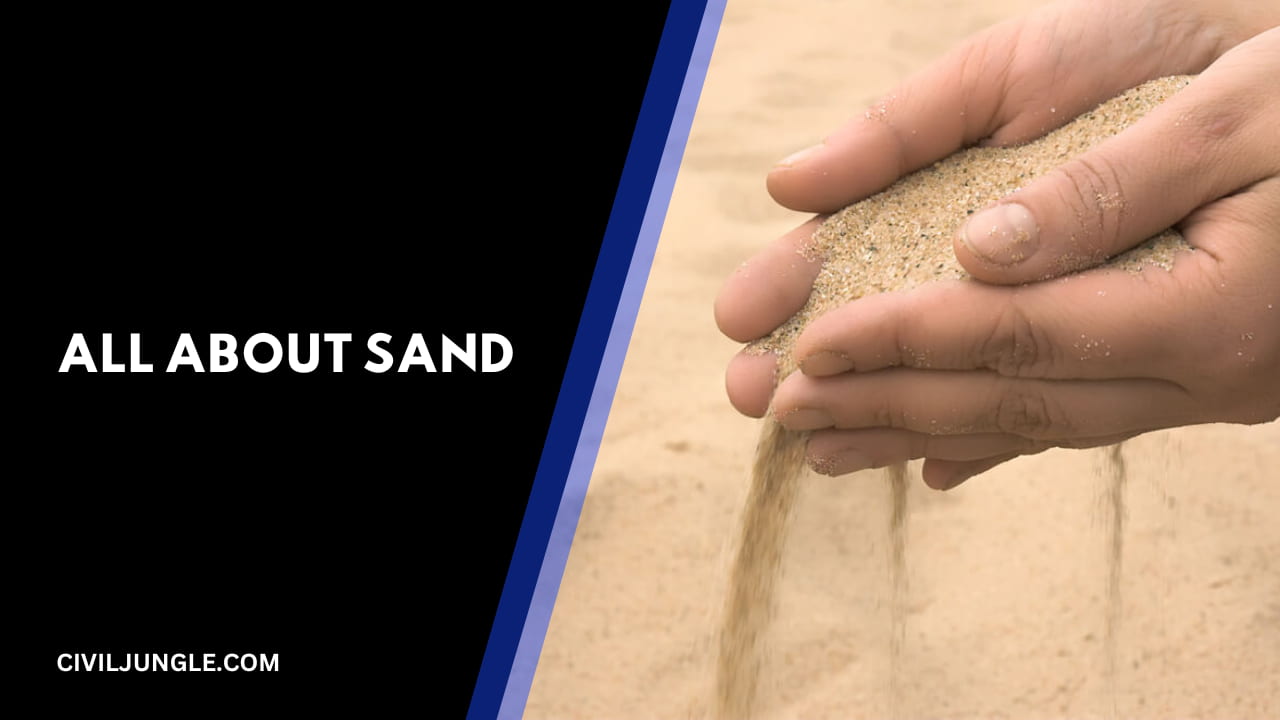
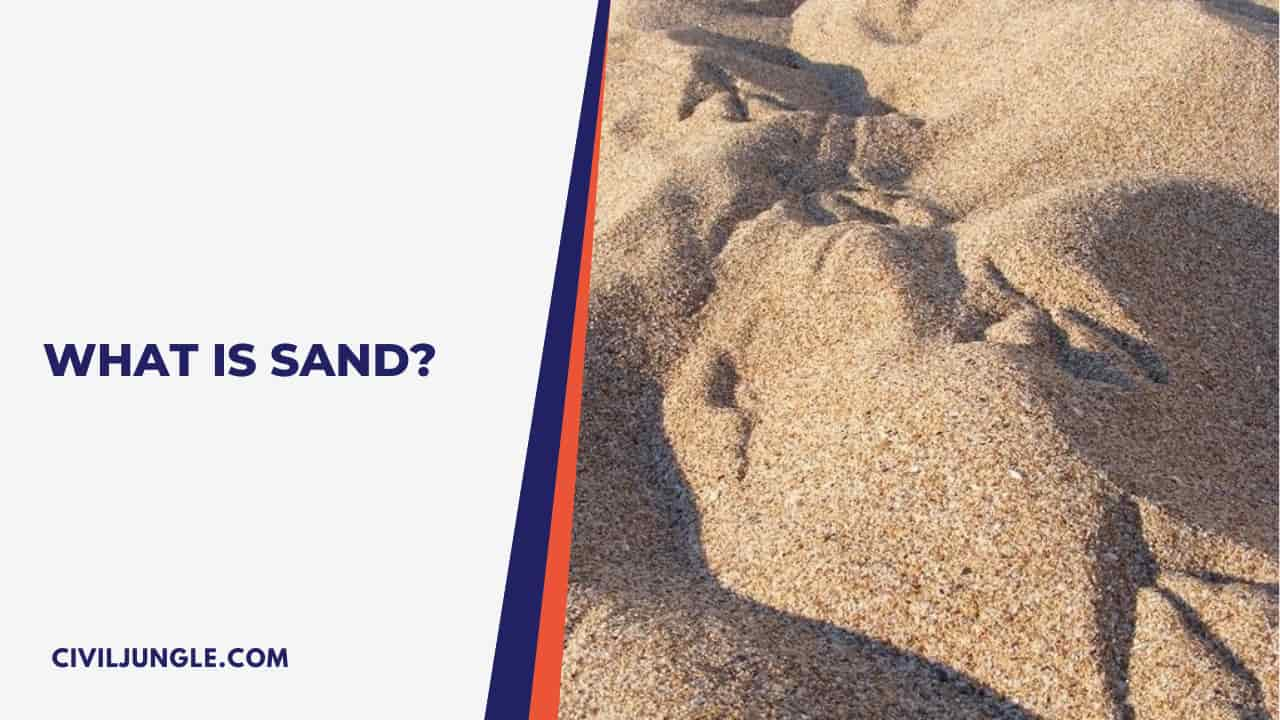
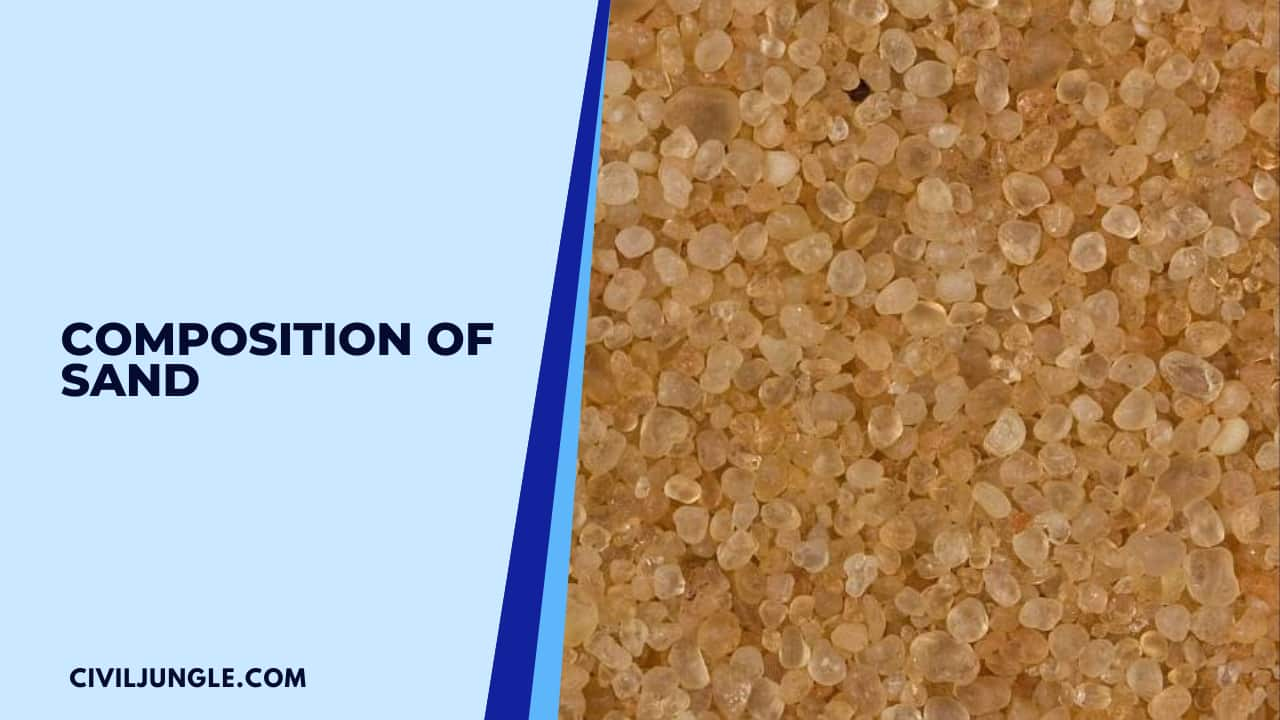
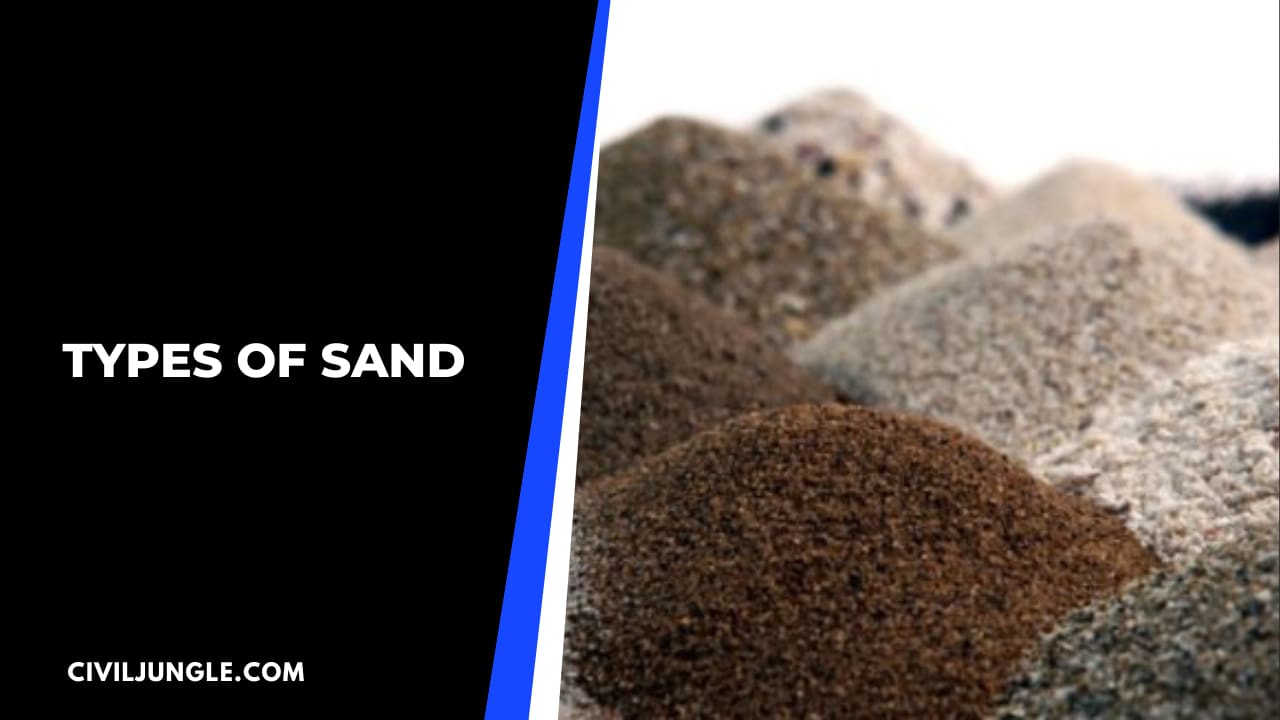
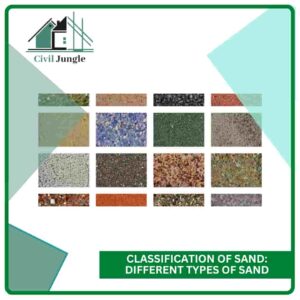
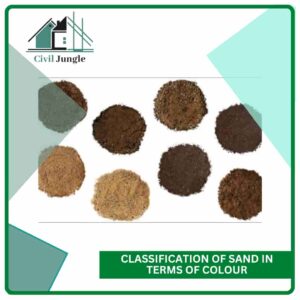
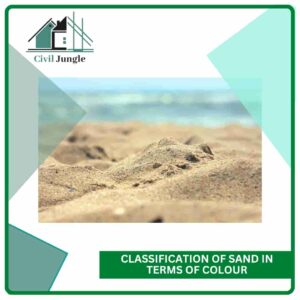
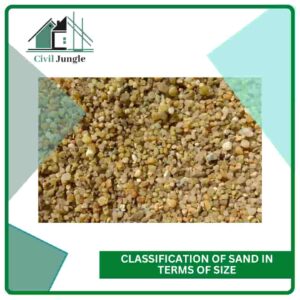

Leave a Reply